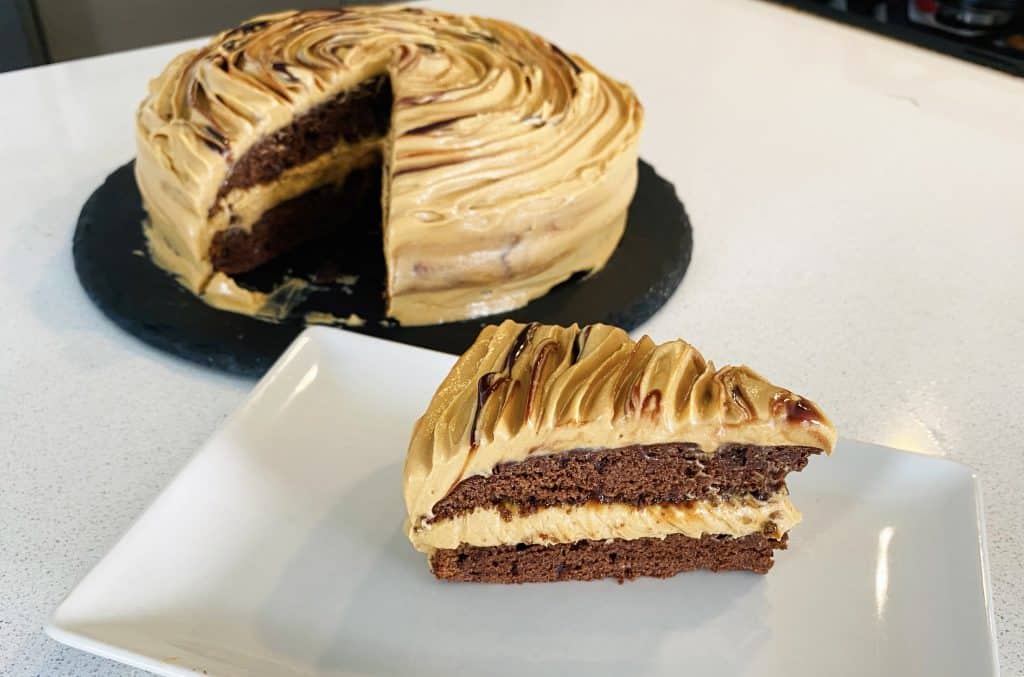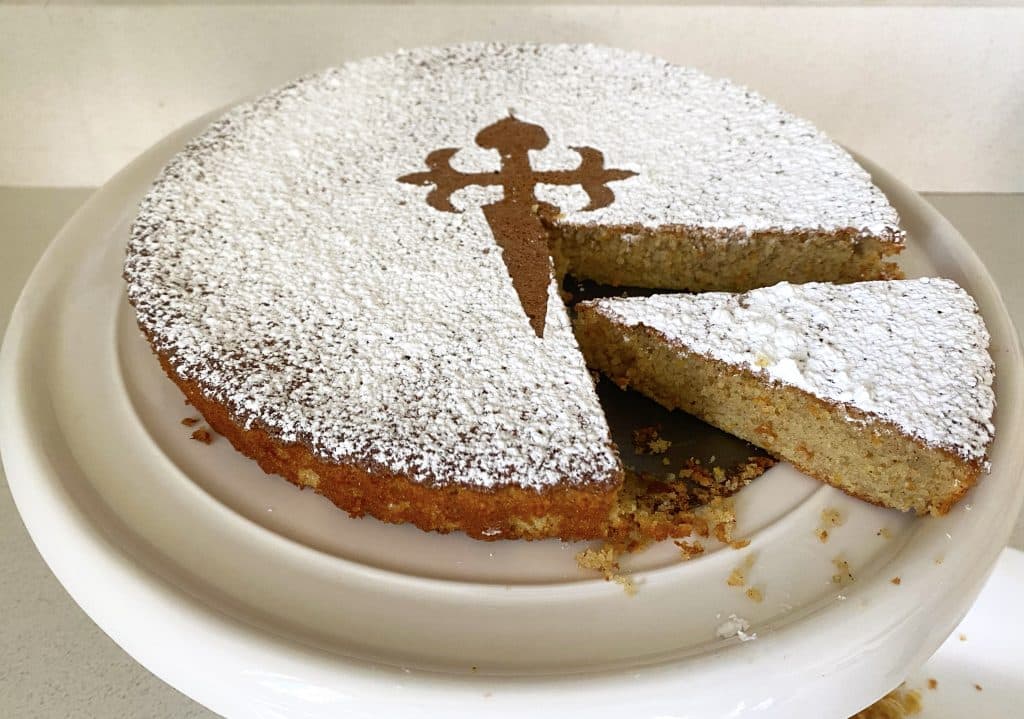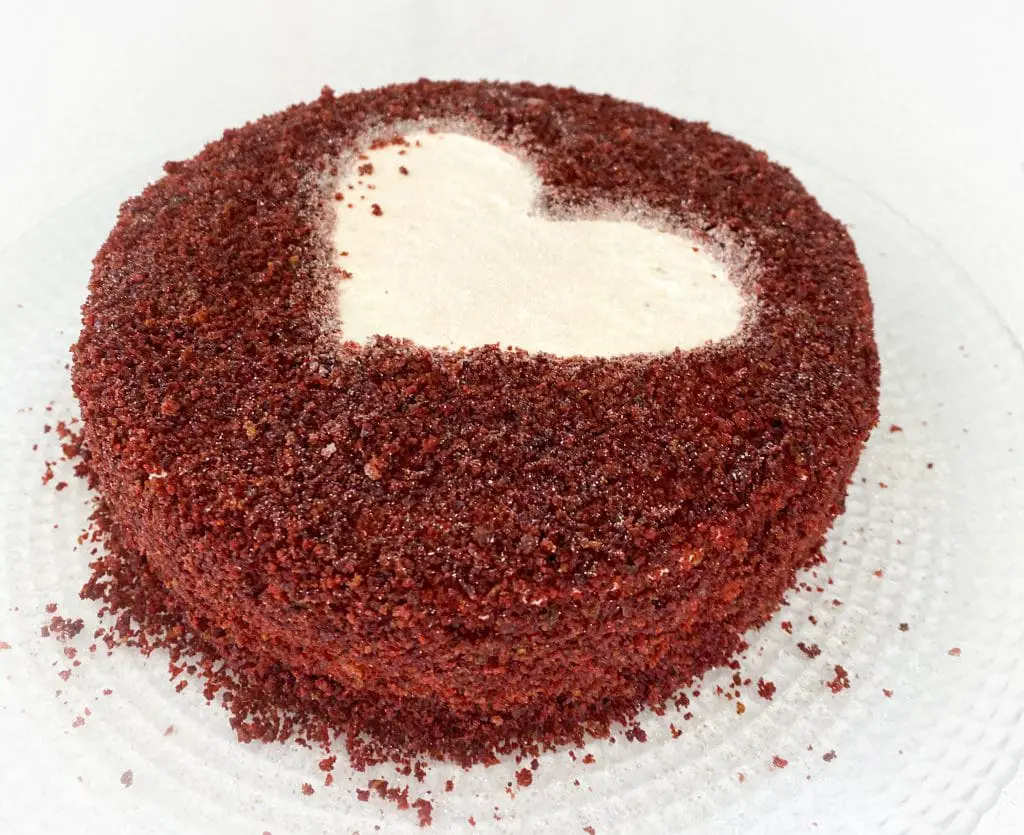The Guinness Stout Cake is a popular tradition in Ireland. The cake is made with Guinness stout, which gives it its unique flavor. The cake is often served at parties and celebrations and is a favorite of both children and adults. The Guinness Stout Cake is a moist, dense cake that is covered with a rich chocolate frosting or a cream cheese frosting. The cake is often decorated with shamrocks or other Irish symbols.
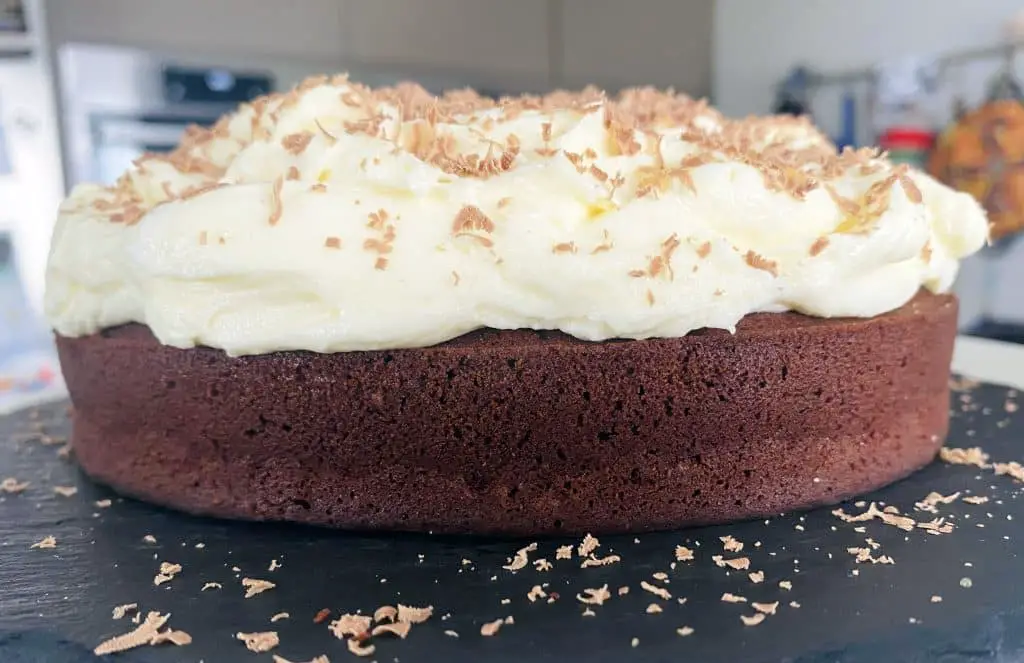
Although there are plenty of Guinness cake recipes all over the internet, It was not easy to find a good one, and not just well-balanced and working, but without overwhelming amounts of butter and sugar. This recipe uses all-purpose flour, as well as pure dark cacao. While the cake itself is not too sweet, the cream cheese frosting adds a lovely richness.
Ingredients:
For the small Guinness cake:
- 120 ml Guinness stout
- 50 ml whole milk
- 125 g unsalted butter
- 180 g dark brown sugar
- 2 eggs, L, at room temperature
- 1/2 teaspoon vanilla extract
- 185 g all-purpose flour
- 50 g dark pure cacao
- 1 teaspoon baking powder
- 1/4 teaspoon salt
Directions for the cake:
- Preheat an oven to 180°C (356°F)
- Lightly grease the interior of a baking mold with butter.
- Sift the flour, baking powder, cacao, and salt together.
- In a small saucepan, heat the Guinness and butter over medium heat just until the butter melts. Add the brown sugar and stir until dissolved. Remove from heat and cool slightly.
- In a large bowl, whisk together the eggs and vanilla. Add the Guinness mixture slowly and whisk until combined.
- Add milk.
- Add half of the sifted dry ingredients and mix for a few moments until incorporated. Add the other half of the dry ingredients and mix just until incorporated. Do not overmix the batter!
- Pour the batter into the prepared baking mold (I used a round mold, d=18 cm) and spread it out evenly.
- Bake for around 45 minutes, until baked or until a toothpick inserted into the center comes out clean.
- Allow the cake to cool in the pan for 10 minutes before inverting it onto a wire rack to cool completely.
If you have enough time, then when the sponge is cooled to room temperature, wrap it in a plastic film and send it to the fringe for 12-24 hours, it will be even better.
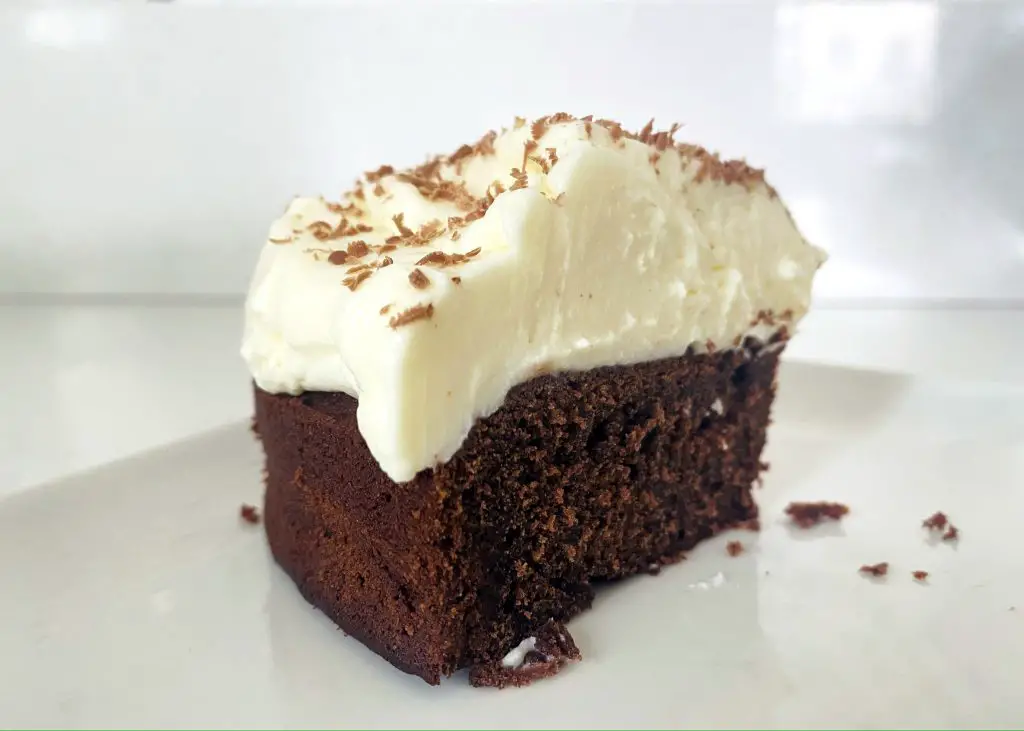
Ingredients for the Cream Cheese frosting:
- 100 g sugar powder
- 140 g heavy cream (min 35%), cold
- 250 g mascarpone cheese, cold
Directions for the Cream Cheese Frosting:
- Chill the cream and all equipment thoroughly, especially in hot weather. If the cream is too warm, it is hard to whip it and it curdles easily.
- Slightly whip the mascarpone cheese in a bowl, it should have a creamy and smooth texture.
- Combine the whipped cream and mascarpone cheese, and add the sugar powder.
- Whip the mixture with sifted sugar powder (confectioner’s sugar). Use the whip attachment of your mixer and run the machine at medium speed.
Do not overwhip. Stop beating when the cream forms peaks that hold their shape. If the cream is whipped longer, it first becomes grainy and then curdles (separates into butter and whey).
- Put the cream in a pastry bag, if you are not going to use it immediately, store it in a refrigerator.
- Spread the cream on the top of the cake or decorate as desired using a pastry bag with piping additional cream, making patterns, etc.

Guinness Stout Cake History
Guinness has been brewed in Dublin, Ireland since 1759. In 1820, Arthur Guinness II added roasted unmalted barley to the beer’s recipe to give it a distinctive flavor and color. The first Guinness Stout Cake was created in 1827 by a baker named John Grimwood. He used Guinness Stout as an ingredient in the cake’s batter, which made the cake moist and flavorful. The cake became so popular that it was soon being sold in pubs and bakeries all over Dublin.
In the early 1900s, Guinness began exporting its cake mix to other countries, including England and Australia. Today, the cake is enjoyed by people all over the world. If you’re looking for a unique and delicious dessert, this cake might be worth trying. Chocolate cake is perfect for any occasion, and it’s sure to please even the most discerning palate.
More Pastry Techniques and Recipes:


